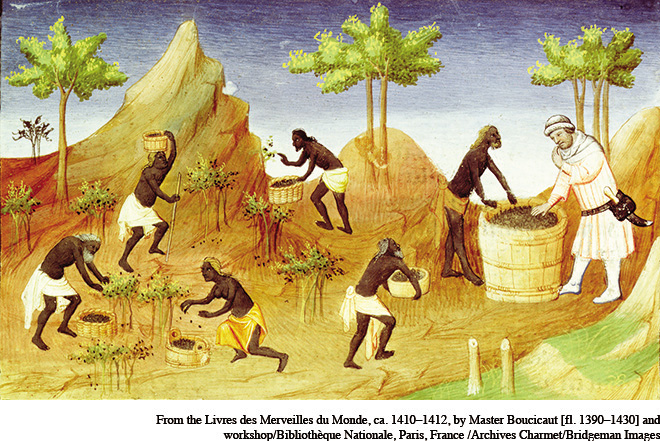A Portuguese Empire of Commerce
The arena of Indian Ocean commerce into which Vasco da Gama and his Portuguese successors sailed was a world away from anything they had known. It was vast, both in geographic extent and in the diversity of those who participated in it. East Africans, Arabs, Persians, Indians, Malays, Chinese, and others traded freely. Most of them were Muslims, though hailing from many separate communities, but Hindus, Buddhists, Christians, Jews, and Chinese likewise had a role in this commercial network. Had the Portuguese sought simply to participate in peaceful trading, they certainly could have done so, but it was quickly apparent that European trade goods were crude and unattractive in Asian markets and that Europeans would be unable to compete effectively. Moreover, the Portuguese soon learned that most Indian Ocean merchant ships were not heavily armed and certainly lacked the onboard cannons that Portuguese ships carried. Since the withdrawal of the Chinese fleet from the Indian Ocean early in the fifteenth century, no major power was in a position to dominate the sea lanes, and the many smaller-
Connection
To what extent did the Portuguese realize their own goals in the Indian Ocean?
Given these conditions, the Portuguese saw an opening, for their ships could outgun and outmaneuver competing naval forces, while their onboard cannons could devastate coastal fortifications. Although their overall economy lagged behind that of Asian producers, Europeans had more than caught up in the critical area of naval technology and naval warfare. This military advantage enabled the Portuguese to quickly establish fortified bases at several key locations within the Indian Ocean world—
This is to inform you that a great lord has passed through the town, burning it and laying it waste. He came to the town in such strength and was of such a cruelty that he spared neither man nor woman, or old nor young—
What the Portuguese created in the Indian Ocean is commonly known as a “trading post empire,” for they aimed to control commerce, not large territories or populations, and to do so by force of arms rather than by economic competition. Seeking to monopolize the spice trade, the Portuguese king grandly titled himself “Lord of the Conquest, Navigation, and Commerce of Ethiopia, Arabia, Persia, and India.” Portuguese authorities in the East tried to require all merchant vessels to purchase a cartaz, or pass, and to pay duties of 6 to 10 percent on their cargoes. They partially blocked the traditional Red Sea route to the Mediterranean and for a century or so monopolized the highly profitable route around Africa to Europe. Even so, they never succeeded in controlling much more than half of the spice trade to Europe.

Failing to dominate Indian Ocean commerce as they had hoped, the Portuguese gradually assimilated themselves to its ancient patterns. They became heavily involved in carrying Asian goods to Asian ports, selling their shipping services because they were largely unable to sell their goods. Even in their major settlements, the Portuguese were outnumbered by Asian traders, and many married Asian women. Hundreds of Portuguese escaped the control of their government altogether and settled in Asian or African ports, where they learned local languages, sometimes converted to Islam, and became simply one more group in the diverse trading culture of the East.
By 1600, the Portuguese trading post empire was in steep decline. This small European country was overextended, and rising Asian states such as Japan, Burma, Mughal India, Persia, and the sultanate of Oman actively resisted Portuguese commercial control. Unwilling to accept a dominant Portuguese role in the Indian Ocean, other European countries also gradually contested Portugal’s efforts to monopolize the rich spice trade to Europe.